Copyright Aldo Vacca & Donna J. Macdonald
Photography Copyright John Anthony Rizzo
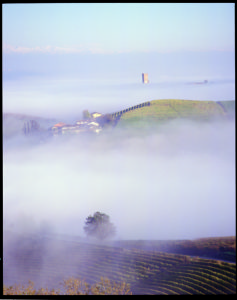
TERROIR is a beautiful French word that describes how a wine is the result of not only the vinifcation of grapes, but also of the environment where those grapes grow. Yes, it is soil, but also sunshine, light, climate, elevation; and then eventually pruning, agricultural practices, tradition and people. All these factors work together to create a terroir.
The grape variety and terroir together create a “vino di terriorio” where every sip the wine not only tells a story of the grape, but of the land as well. Few wine areas through the centuries have reached this almost legendary status, attracting wine lovers from throughout the world, in search of “pellegrinaggi vinicoli” or pilgrimage of wine: Barbaresco is one of these places.
The Barbaresco appellation consists of four small villages in the section of the Piedmont region called the Langhe. Uniquely situated only a one-hour drive south from the city of Torino and an equal distance to the Mediterranean and the Western Alps. Approximately 2,500 acres of Nebbiolo grapes are grown here which produce just over three million bottles of Barbaresco. The Barbaresco wine-growing region is made up of a multitude of hills, ridges and slopes, each with a unique name, some have been renowned for centuries while others have acquired more recent fame. In the following pages you will find maps of the region and the villages and the list of the “indicazioni geografiche” (single vineyards) as defined by the Community of Barbaresco.
Barbaresco, where we stand
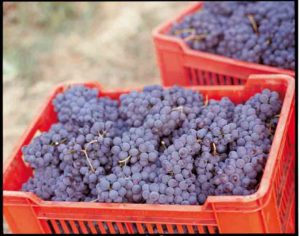
Grapes have been cultivated in the hills of Barbaresco for centuries. They were most likely introduced to this region by the Romans as they moved north to conquer the region known as the land of “Italian Gaul”. The original varietals, through evolution, adapted to their various environments and the complex viticultural diversity of Italy and all of Europe was born. A document from 1268 found in Rivoli (near Turin) is the first known written evidence of a grape called Nibiol (Nebbiolo) in Piedmont. From this we can conclude that Nebbiolo is the classic original piemontese grape. At that time Nebbiolo had a much larger growing area than we see today. Because it can be a difficult variety to grow, demanding the perfect soil and exposure to the sun so it can express all of its potential of elegance and complexity of flavours, over time it was replaced with easier and more productive grapes. Nebbiolo remains in only those few areas where it delivers wines of superior quality. Barbaresco is one of those areas.
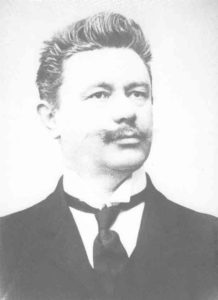
The man who is considered to be the “Father of Barbaresco” is Domizio Cavazza. Professor Cavazza moved to Barbaresco in 1888 when he was hired to be the first director of the newly opened Enological School located in Alba, which is today the oldest Enological School in Italy. In addition to his scientific training, he brought with him a great enthusiasm for quality wine and better viticultural practices. He also developed an awareness of the great potential for the wine grown in the area surrounding the town of Barbaresco. In 1894 Professor Cavazza founded one of the first cooperative wineries of Italy in the castle of Barbaresco, with nine local landowners. He decided to call the wine made from the locally grown Nebbiolo grapes after name of the village: Barbaresco. Thanks to his leadership the wine and the region began to achieve fame and recognition in Italy and Europe.
The premature death of Professor Cavazza in 1913 was a great shock to the young wine industry that lost its mentor and guiding force. Shortly after his death, World War I began and caused a shift in agricultural priorities, In fact, the years surrounding both World Wars were difficult for the economy of the region and all of Italy. Barbaresco did not escape these difficult times. However, wine production did continue and in 1933 the national government officially defined for the first time the “Zona Classica del Barbaresco”. It was the first step to what would become the “denominazione d’origine controllata” (DOC) zone created in 1966 and the ”denominazione d’origine controllata e garantita” (DOCG) in 1984.
Towards the end of the 1950s, with the slow, but steady growth of the world economy, Barbaresco was able to once again rise in stature thanks to a handful of visionary people and wineries that chose to focus on the unique wine of their own land, rather that moving to produce “easier” wines. With the renewed fame of Barbaresco, many more farmers became winemakers and many more Barbaresco labels conquered the world markets and vineyards growing this unique grape are now back again “to rule” on these hills.
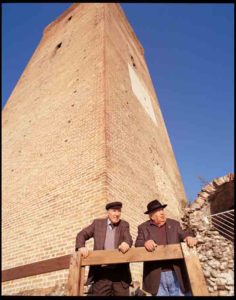
Four small villages, fewer than 3000 people, 130 wineries and only 2.500 acres of vineyards. This book is dedicated to them. It is a journey trough a unique place resplendent with character and charm, like the wine that is produced here.
Salute!
Il TERRITORIO
Barbaresco is one of the great red wines of Italy. Located in the heart of the Piedmont Region and surrounded by an incredible chain of mountains which define this area, its beauty as well as its climate. The word Piedmont translates to “foot of the mountain” and it accurately describes this place, and like the wine this book celebrates, has a personality that is strong and complex.
The Langhe Hills
The hills of the Langhe stretch in the direction of the Alps with panoramic vistas that are both intoxicating and melancholy. For centuries this land only represented hard work for the people who lived here. In only the last fifty years this region has become famous around the world for extraordinary products like wine, hazelnuts, truffles, and cheese… and the beautiful views that define this majestic landscape.
The Tanaro River
The Tanaro River winds its way from the Maritime Alps north-east to join the River Po, along the way it defines the northern border of the Albesi Langhe. While alluring, this river plays a fundamental role in shaping the climate in the region with summer breezes, or the mist that climbs slowly up the hills when the weather turns cool.
The Terrain
This land is a vivid example of the geological eras that coursed through this terrain. The calcium rich stone in the hills mixed with the fertile alluvial soil carried forth by the Tanaro River to create a perfect balance for grapes to grow. It is this soil balance that allows the grape Nebbiolo to fully express itself to become Barbaresco!
The Italian word for mist is “nebbia” and the grape is called Nebbiolo. Does this mean that the mist defines the quality of the wine? Probably not, the sun and the soil affect the grapes most, however, the personality of the wine would not be the same without the light autumn mist that brushes against the crest of the hills and settles into the valley floors.
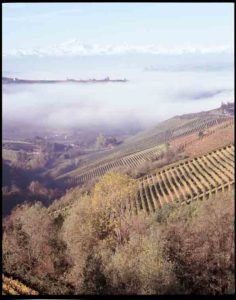
THE NEBBIOLO GRAPE
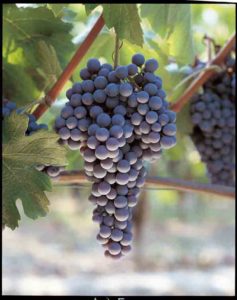
Nebbiolo is the “vitigno nobile” or noble variety of the Piedmont Region. It is the first to break bud in the spring and the last to be harvested in the fall and as a result it claims the warmest sites and requires great care and dedication throughout the year. The Nebbiolo grape, more than any other variety, defines the true character of these hills, bringing to the world an inimitable wine.
THE VINEYARDS
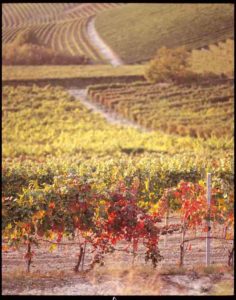
Every hill has a name, and every curve in the road introduces a new microcosm that shows the bond between the land, the vineyards and the people who work to create these world famous wines. These vineyards are the essence of the wine Barbaresco; they are a testament to the character and diversity of this wine and how it is influenced by every shift in the terrain.
VILLAGES
Barbaresco, Neive, Tresco, San Rocco Seno d’Elvio
These villages are the “zona d’origine” of the Barbaresco wine-growing region. They are bonded by their history, by their soil and their beauty
BARBARESCO
Barbaresco is not only the village that gives the name to the wine, it is also the heart of the Barbaresco wine-growing region. This is the place where Barbaresco was born, and the history of the region is still maintained.
Through the ages the medieval tower has stood tall over the valley above the Tanaro River and it still remains a symbol of the community and a landmark for the region.
NEIVE
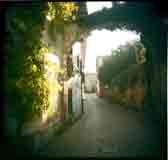
Neive is one of the most beautiful villages in the entire Piedmont Region. Multiple churches, winding streets, and splendid baroque architecture draws visitors throughout the year. Neive adopted the moniker “land of four wines” because they have excellent growing conditions for the four famous grapes of the region: Nebbiolo, Moscato, Dolcetto and Barbera.
TREISO
Treiso has the highest elevation of these villages and as such has the coolest temperatures as well as incredible views of the Alps, which has made it an attractive place to live since the Roman times. Treiso also has a reputation for producing wonderful quality Dolcetto d’Alba.
SAN ROCCO SENO D’ELVIO
Today San Rocco Seno d’Elvio is a suburb of the town of Alba, however, at one time it was a part of the community of Barbaresco. It remains bonded with the Barbaresco wine-growing region because of its terrain and the growing conditions, which deliver the flavors of Barbaresco wine.
THE PEOPLE
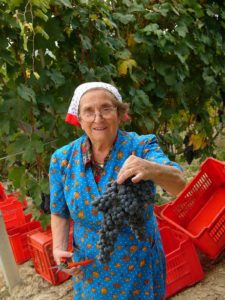
The towns are alive with activity, the land and the vines are carefully tended day after day throughout the year, and the wine that is this regions most proud accomplishment is a reflection of the people who live here and their daily routine. They proudly offer the spirit and essence of their life’s work and their history in every glass of Barbaresco poured.
MAPS
The Barbaresco appellation consists of four small villages in the section of the Piedmont region called the Langhe. Uniquely situated only a one-hour drive south from the city of Turin (Torino) and an equal distance to the Mediterranean and the Western Alps. Approximately 2,500 acres of Nebbiolo grapes are grown here which produce just over three million bottles of Barbaresco. The Barbaresco wine-growing region is made up of a multitude of hills, ridges and slopes, each with a unique name, some have been renowned for centuries while others have acquired more recent fame. In the following pages you will find maps of the region and the villages and the list of the “indicazioni geografiche” (single vineyards) as defined by the Community of Barbaresco.